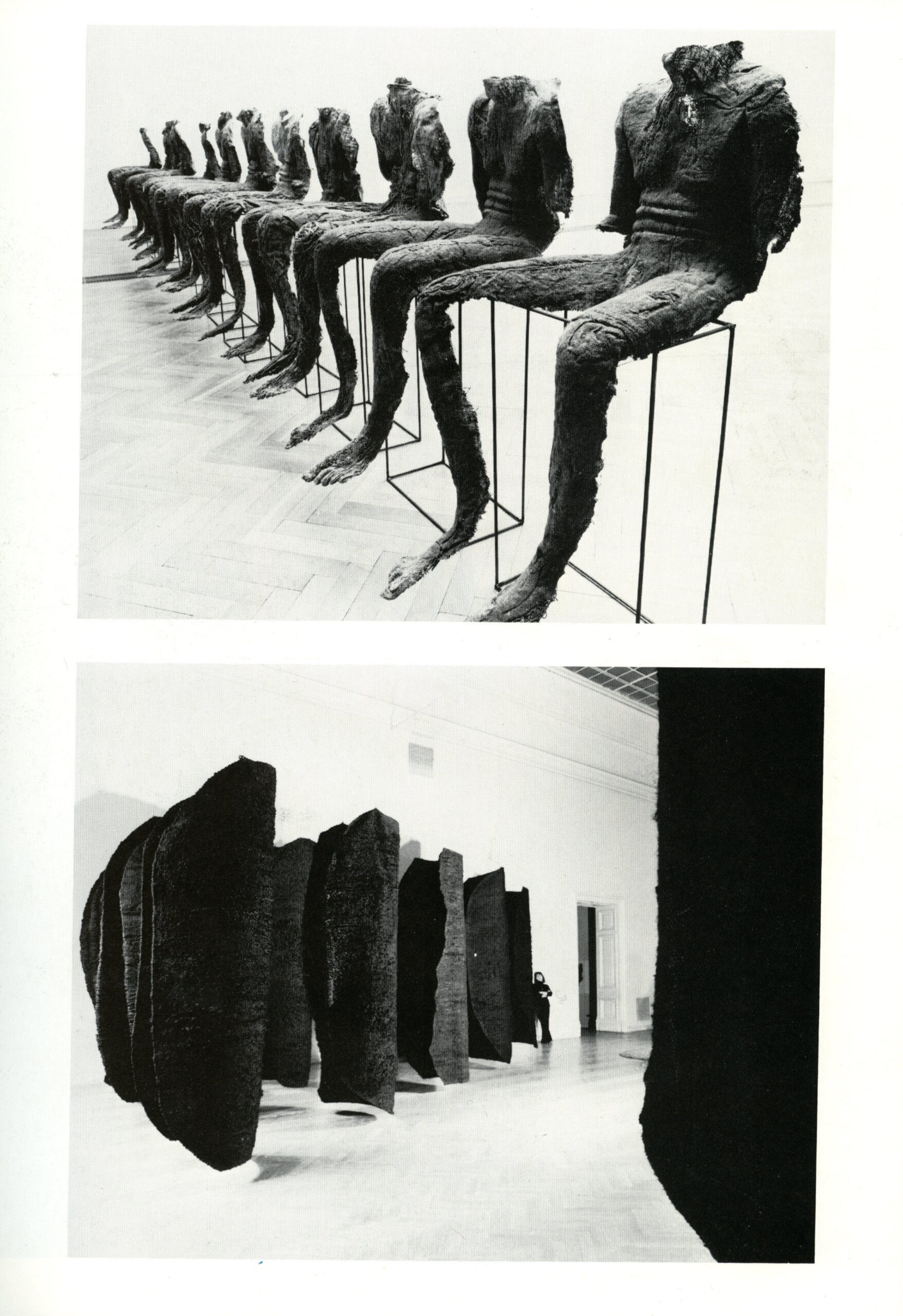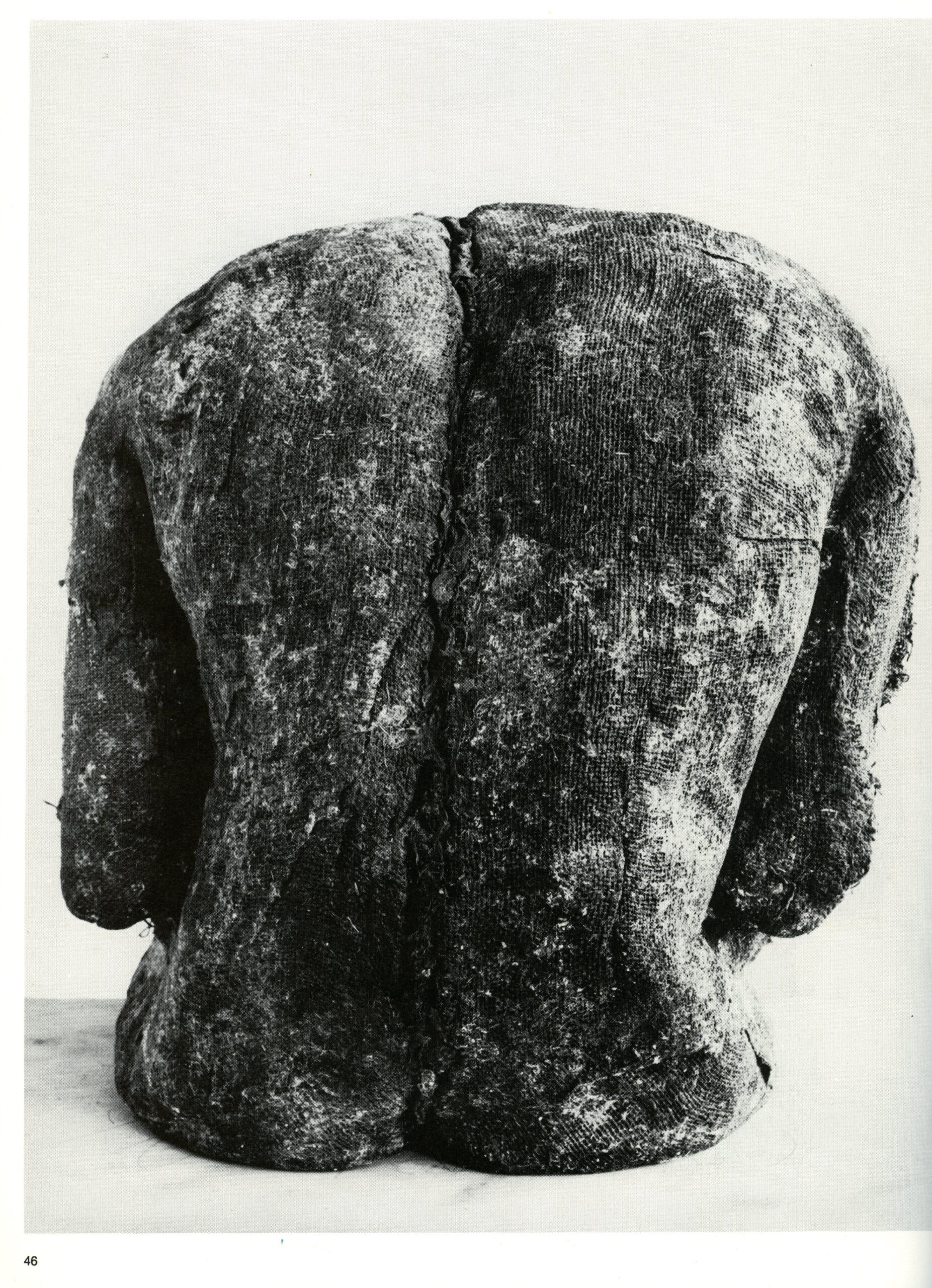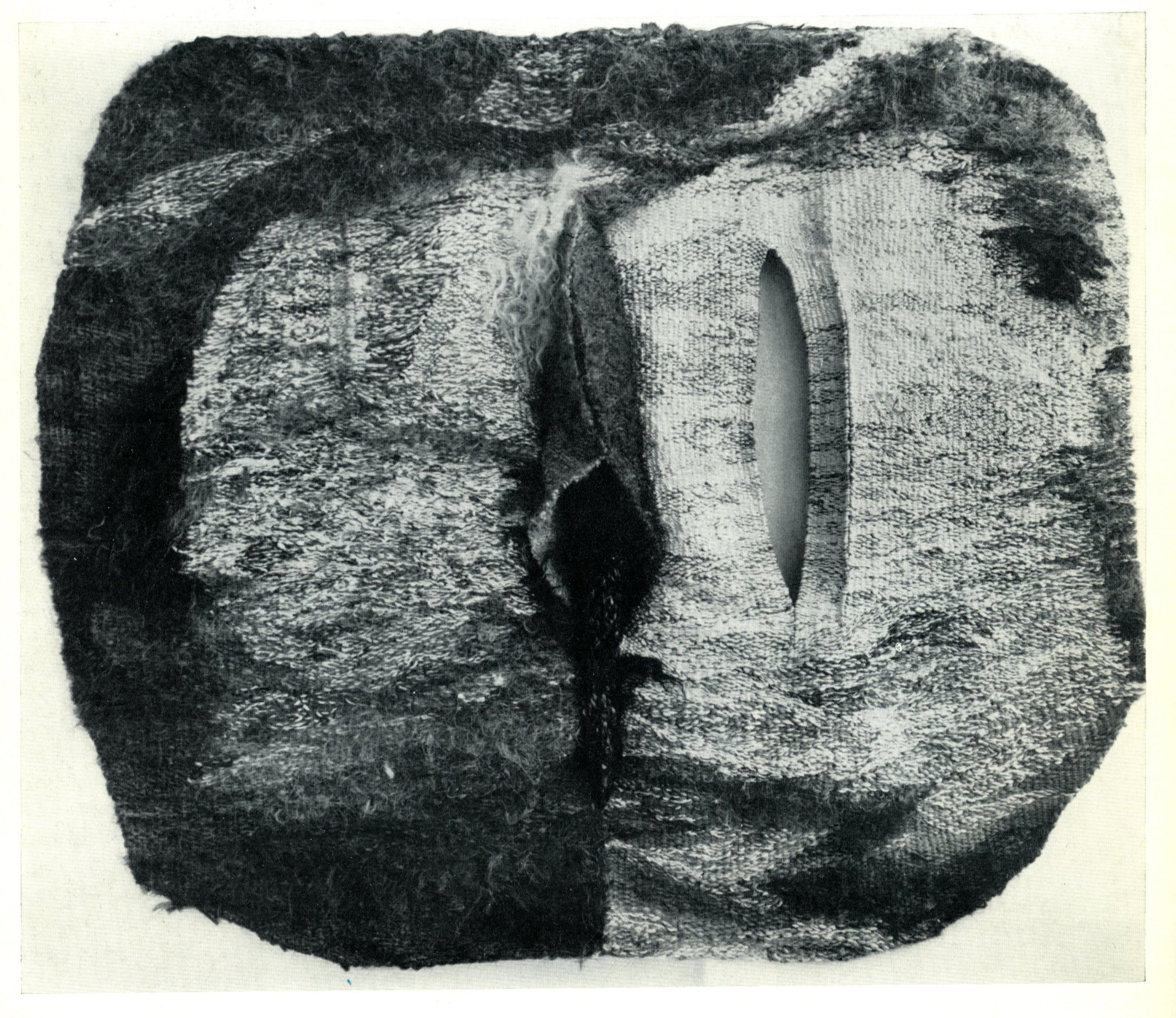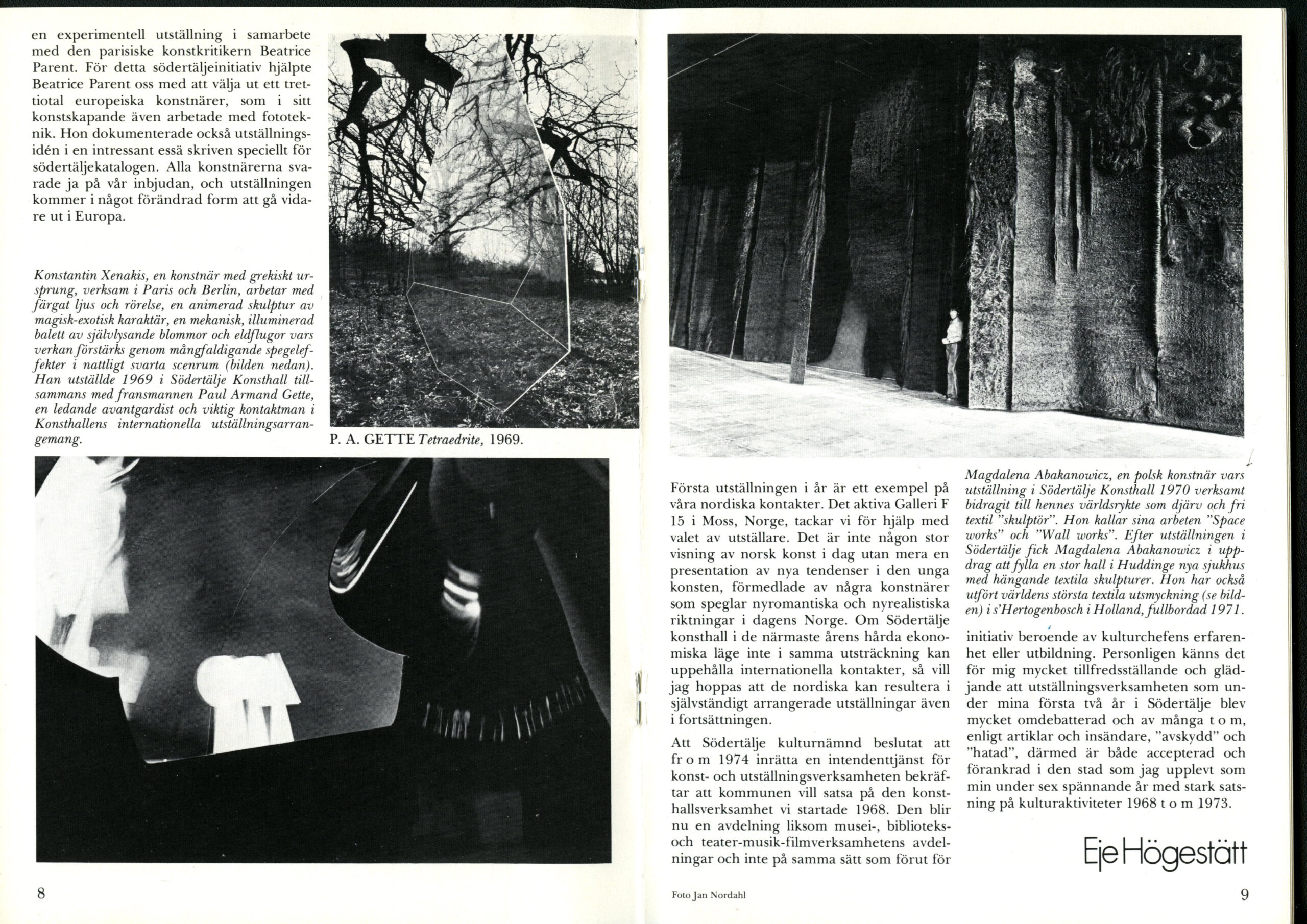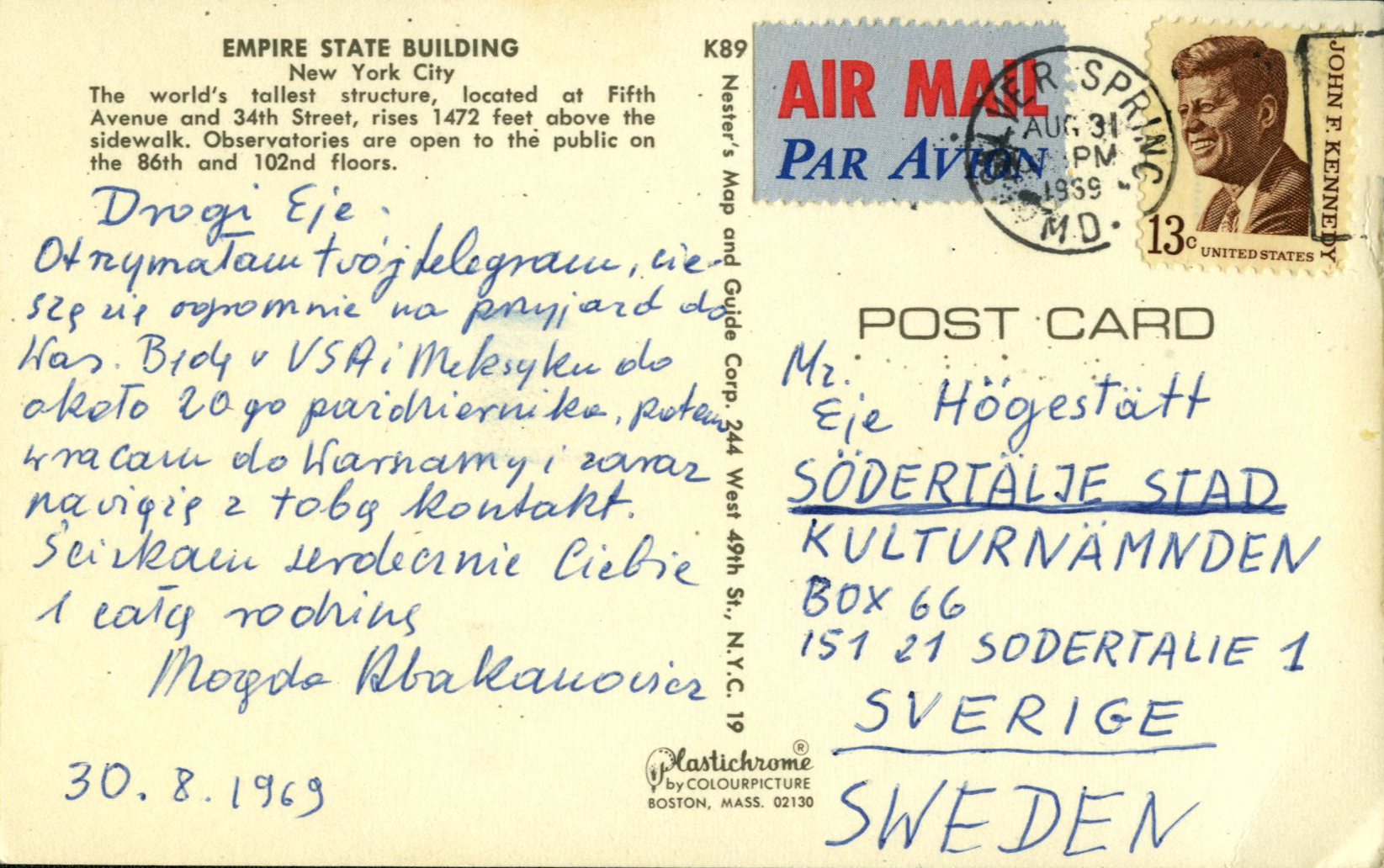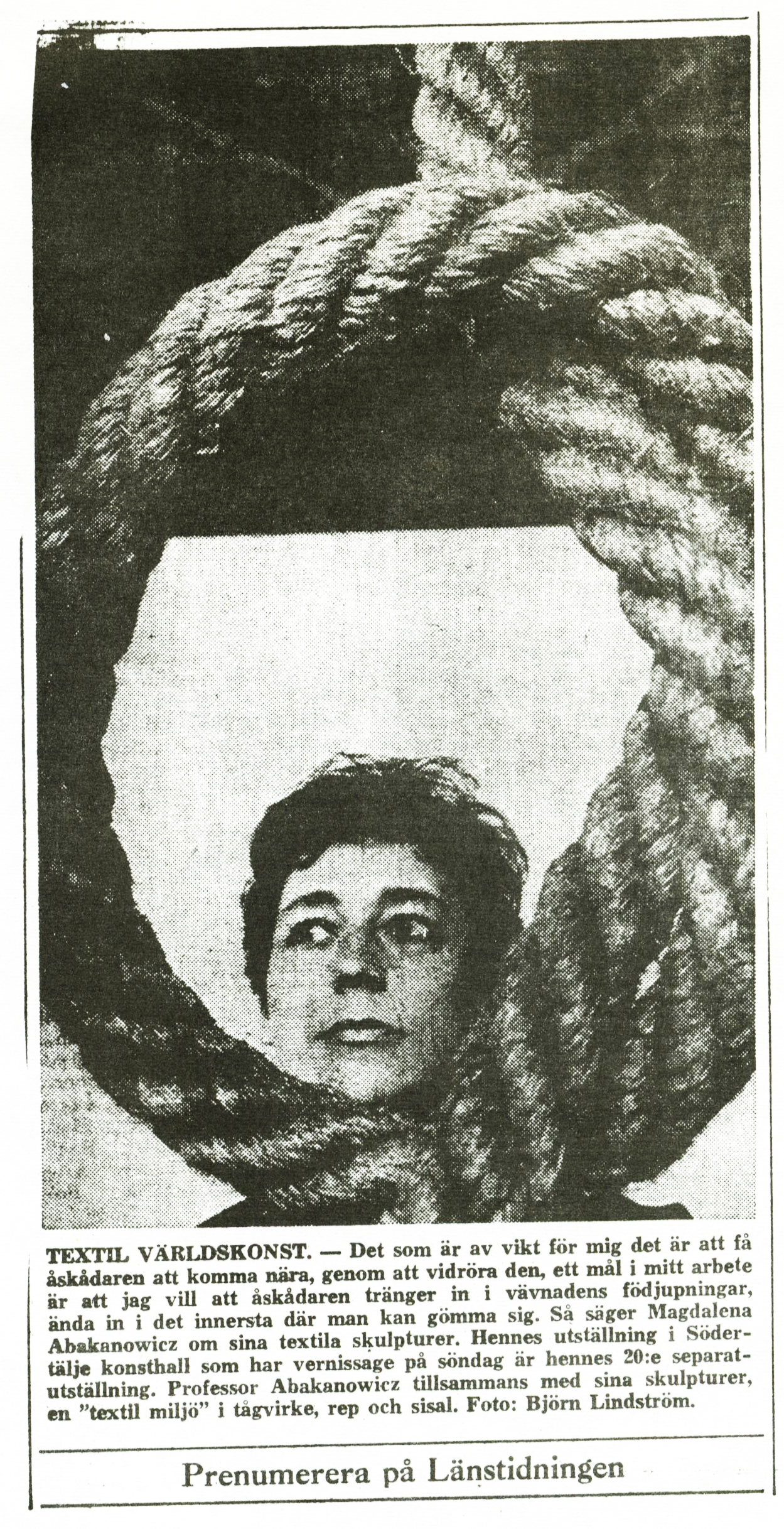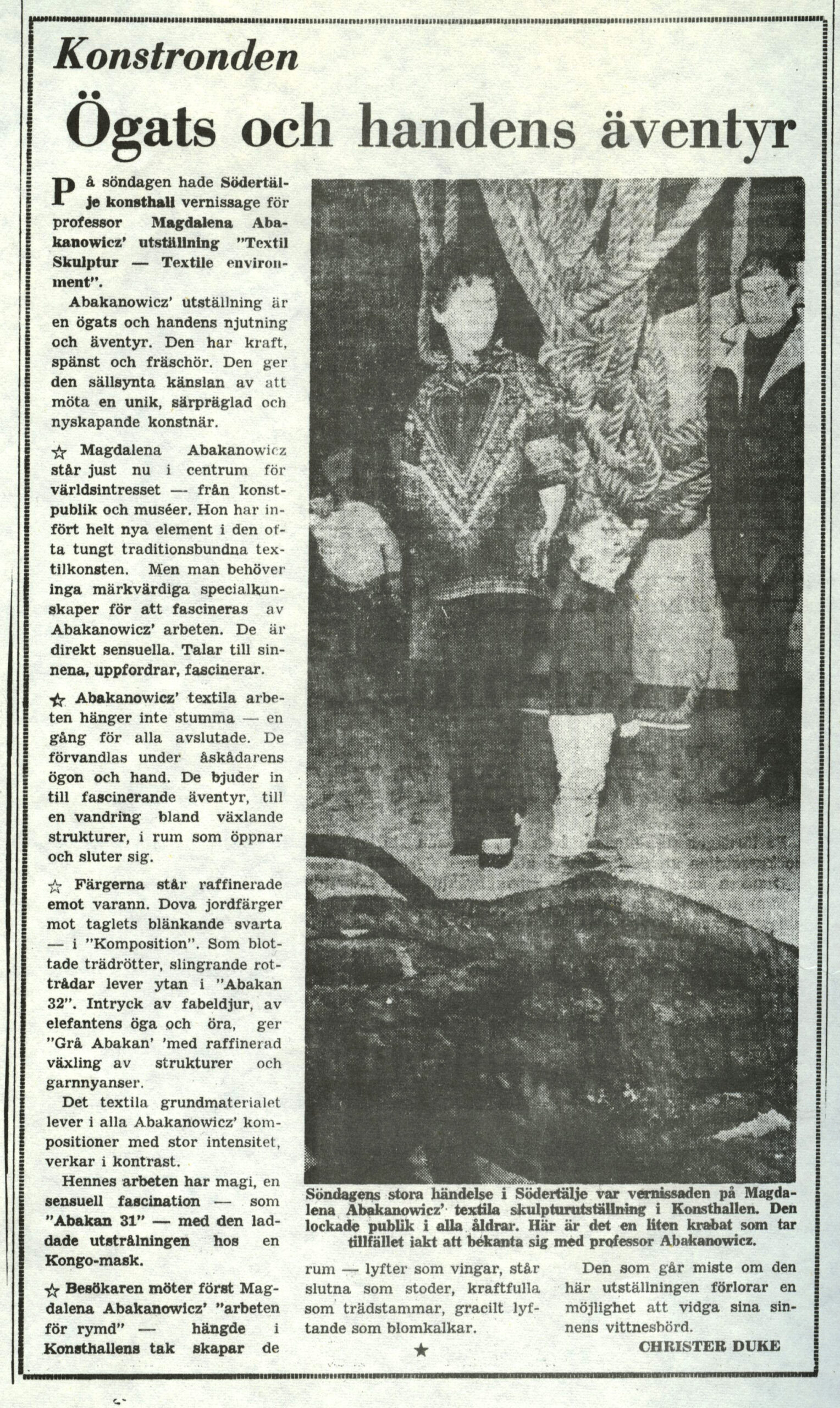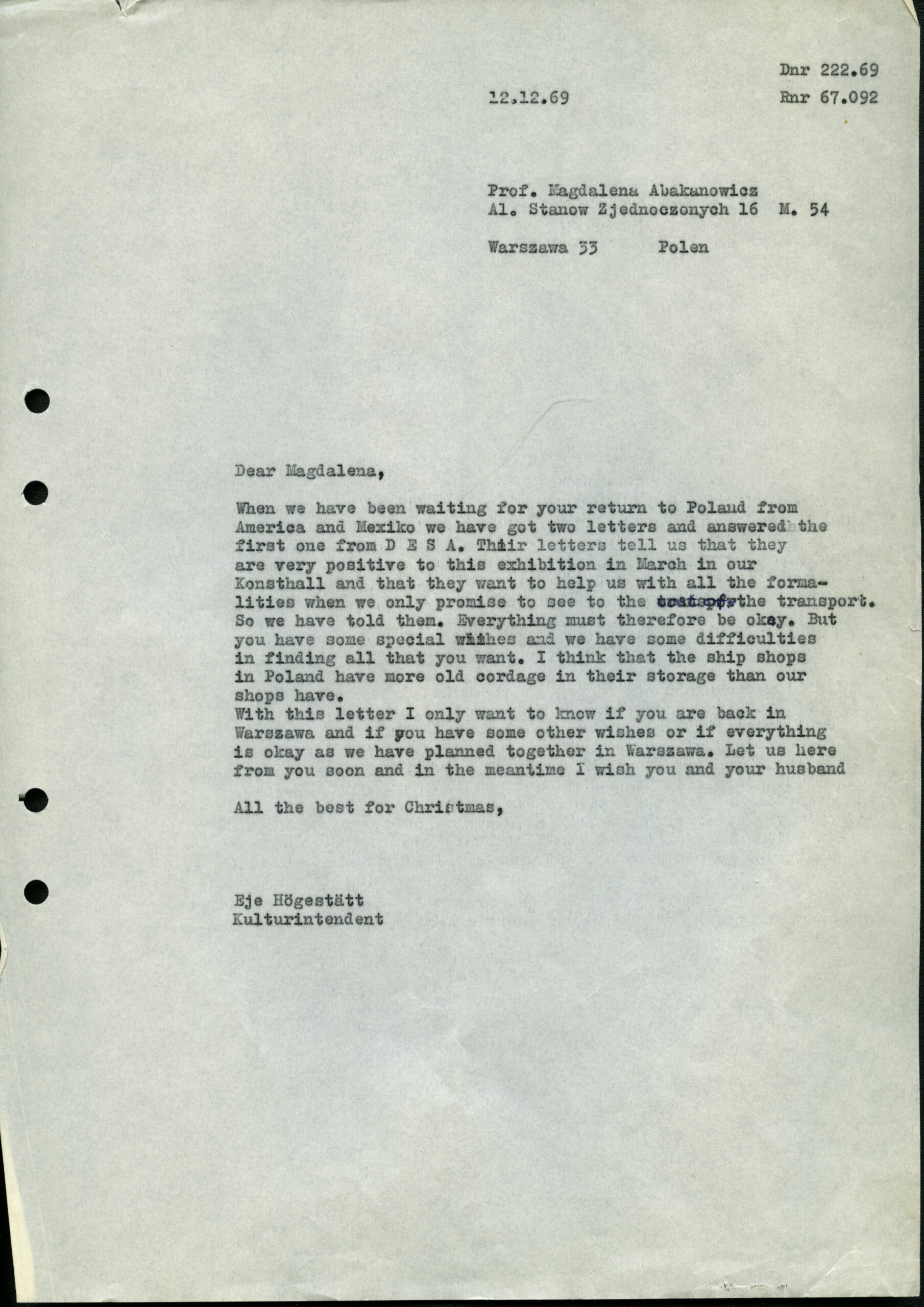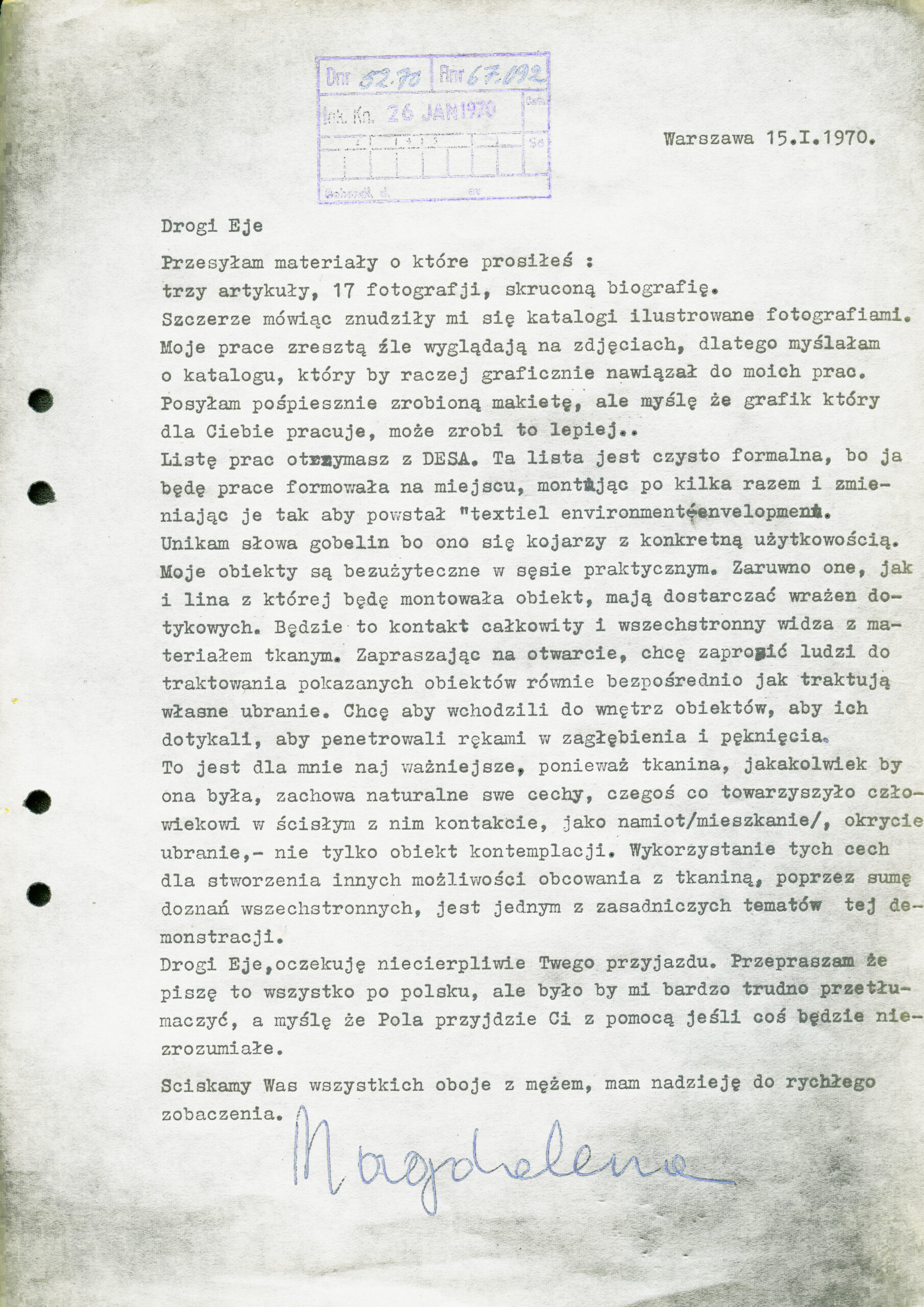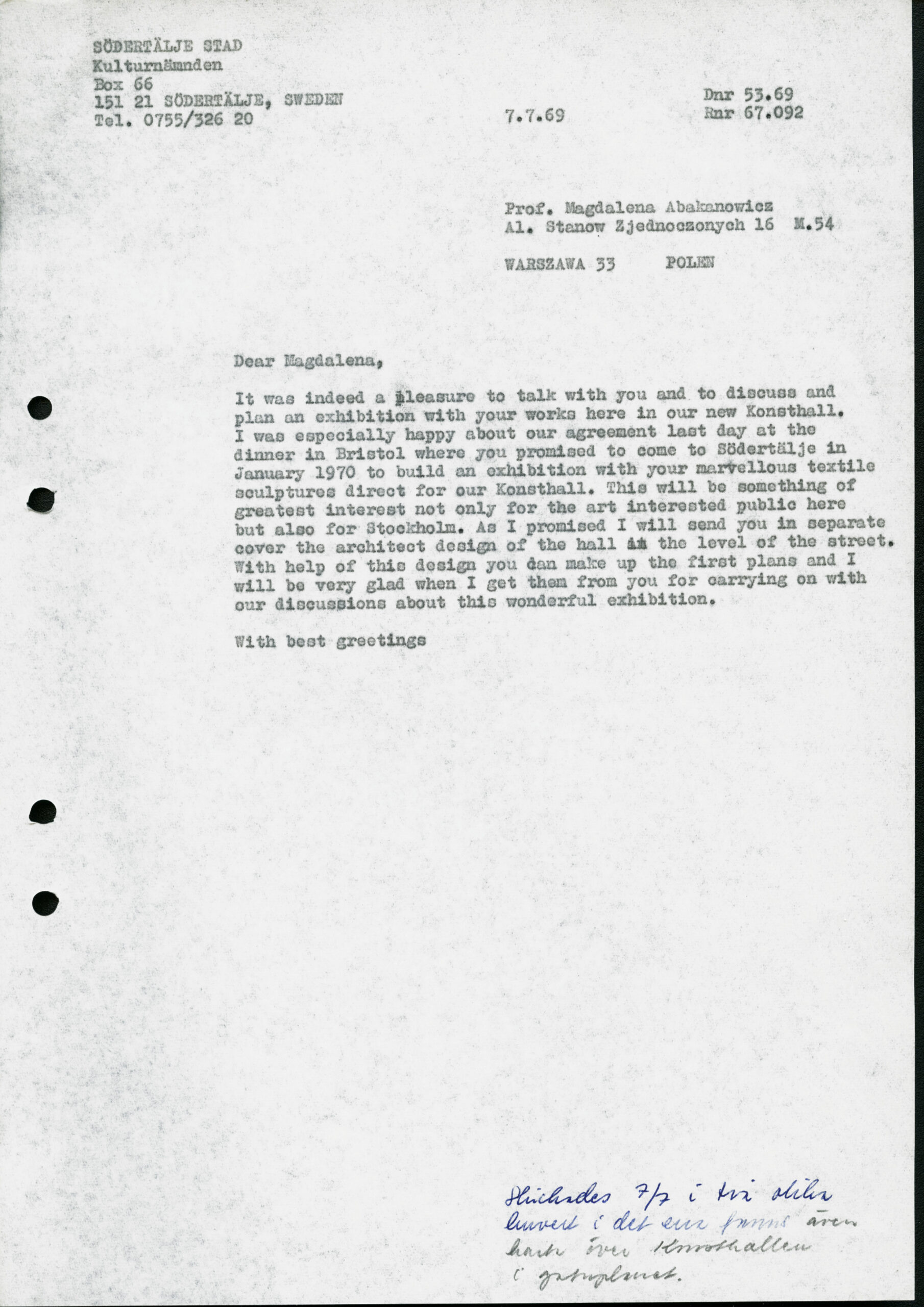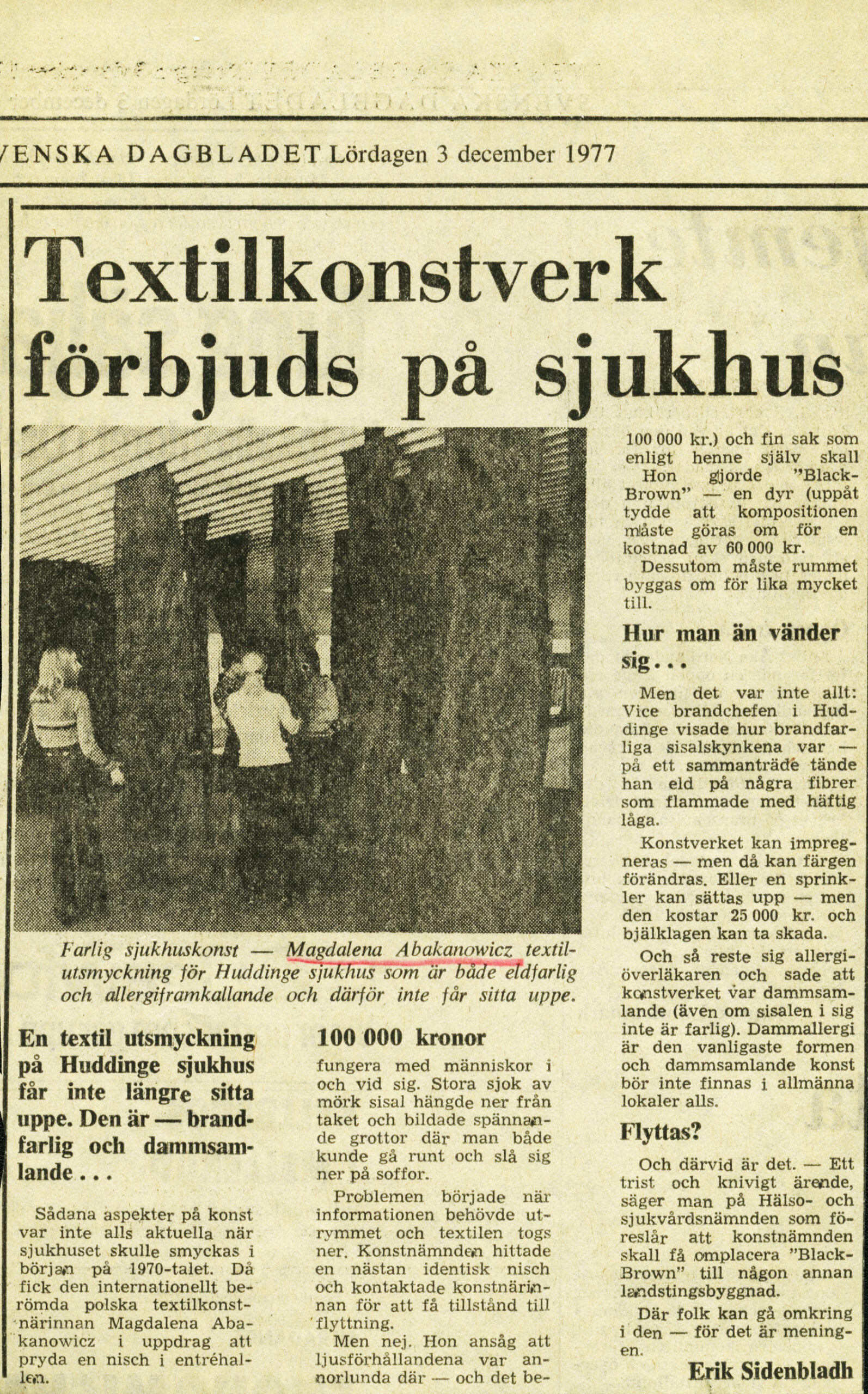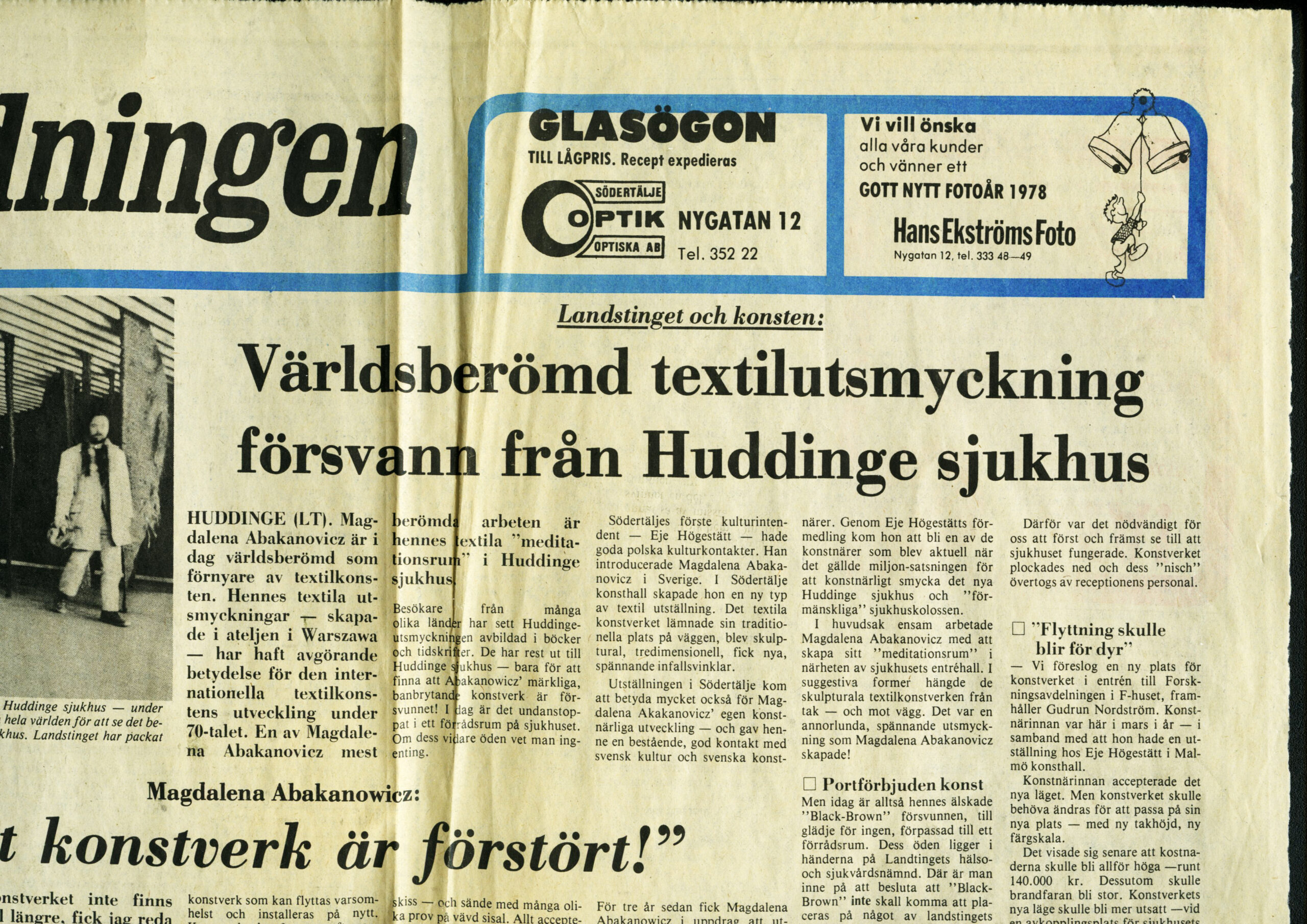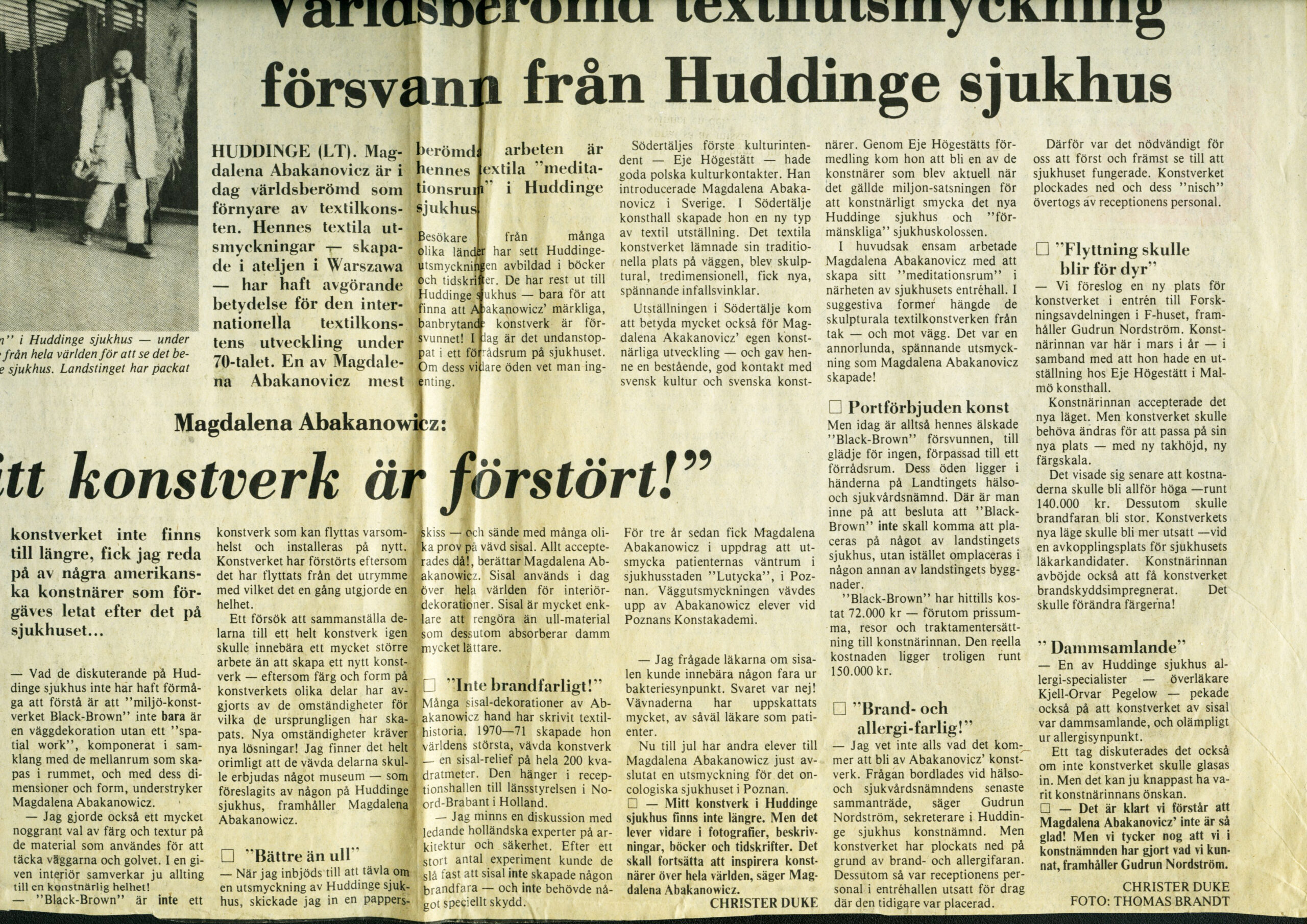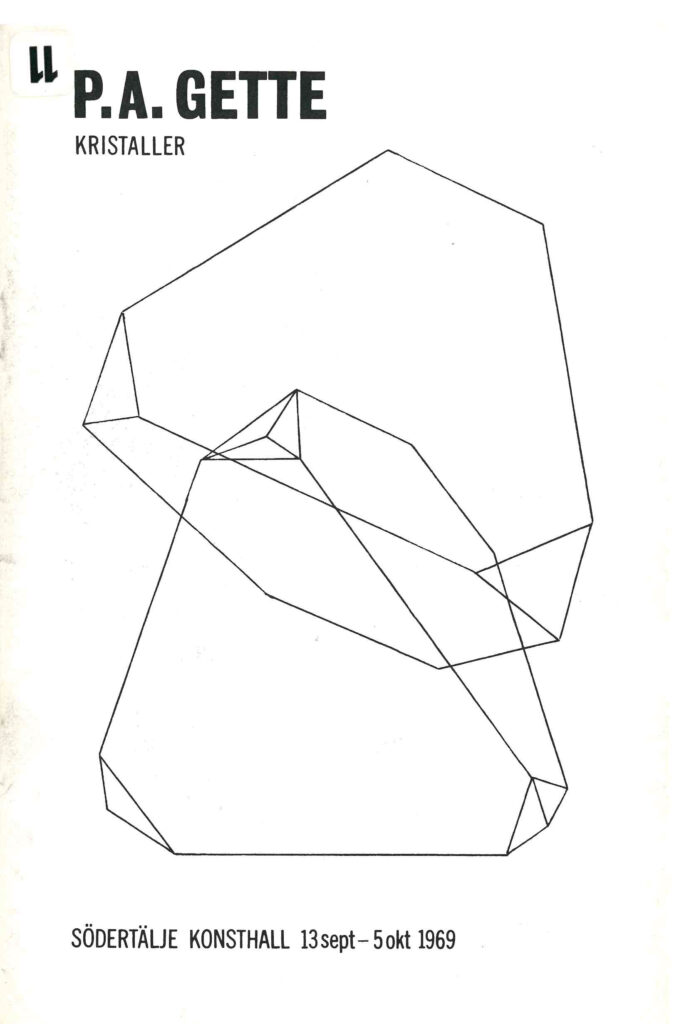
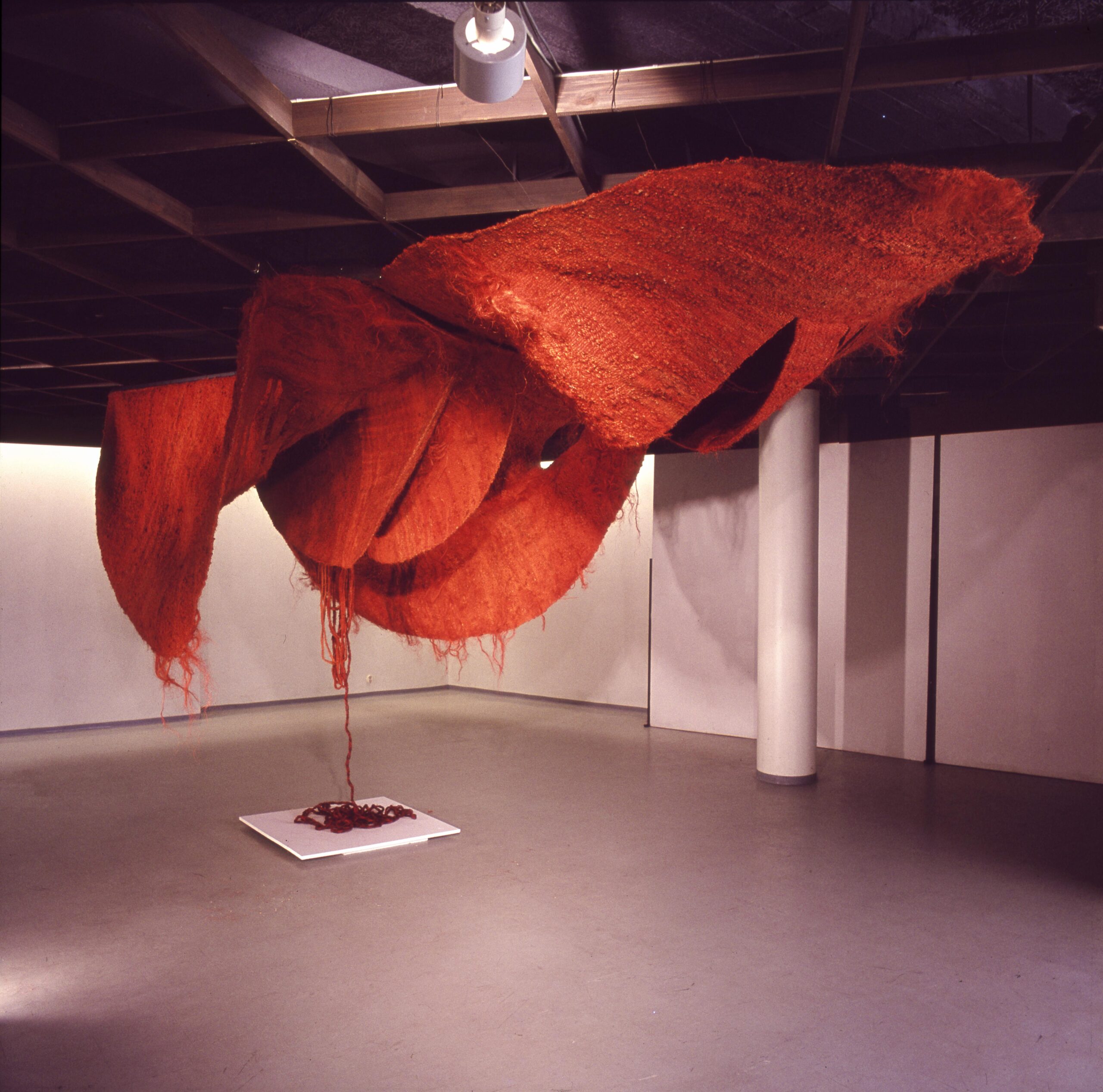

The idea was that Magdalena Abakanowicz would be shown at Södertälje konsthall already in the autumn of 1969, but since she was then fully occupied with working on exhibitions in New York and Mexico City, it was postponed until the spring of 1970.
It was during the 60’s that Abakanowicz made a big impact on the international art scene, as a pioneer in textile innovation. Between 1960 (when she made her separate debut at the Galerie Kordegarda in Warsaw) -69, her career gained momentum with a number of separate exhibitions. She was one of the very first in the textile genre to take the step fully and began to think sculpturally and monumentally. Textile art is now moving out of the wall and into spatial environments. Her textile enviroments are built on site. In the old Södertälje konsthall, she built with the help of rope timber, rope and sisal.
Or as Erika Billeter describes it (quote from an article in the art gallery’s exhibition catalog 1970)
“Her work relates to the room no differently than a plastic work of art. The textile relief corresponds to the sculpture in the room. The huge textile objects that Magdalena Abakanowicz hangs in the rooms have their counterpart in contemporary sculpture. They have the same plastic and spatial quality. They differ from other sculptures only by the material. I call them sculptures of textile material. Today’s art history lexicon has no designation for these works yet, and Magdalena Abakanowicz herself has not found an adequate wording. That is why she calls them “Abakan” and thus only means that they are her work. ”
The works was named as: Abakan big black, Abakan ouvert, Abakan rond. The artist herself was present for three weeks. The director of Södertälje konsthall writes to the Ministry of Culture in Warsaw on 13 of January, 1970: ”This exibition will be built specially for the rooms in our konsthall of the town, Södertälje Konsthall. That means that Prof. Magdalena Abakanowicz has to be here herself to build it during three weeks from the 15th of february. The town has invited her to come here and to build the exhibition. She has accepted and we ask you kindly to help her with all papers and formalities necessary to go to Sweden.”
After the opening, an open part remained which the artist continued to shape during the exhibition. The artist was also asked for help with correspondence and translations during her stay. The archive material that Södertälje konsthall has around this exhibition is quite extensive and consists of letters, reviews and catalogue texts.
With the fabric as a base, the sculptures carry the dimension of strong sensitive presence. The opportunity to see, participate and touch. An invitation to the audience to enter and be surrounded by their monumentality.
She weaves in materials such as sisel and hemp. Knots, ropes, ties, yarn lumps and pieces joined together give a powerful texture.
Magdalena Abakanowicz is described with the words: “She speaks calmly about her obsession – helping the forms work their way out of an inner compulsion.” She talks about her artistic intention “What is important to me is to get the spectator to get close, by touching it, a goal in my work is that I want the spectator to penetrate into the depths of the tissue right into the innermost you can hide.”
Sources: Quotes from the exhibition catalog and letters, div. archive material, compiled by Anneli Karlsson.
Article: Entangled History between Semi-Peripheries: Magdalena Abakanowicz’s Fibre Art on the Swedish Art Scene circa 1970. By Camilla Larsson. Download (double-click) here

Installations from Järnagatan where Södertälje konsthall was located 1968-1977.
